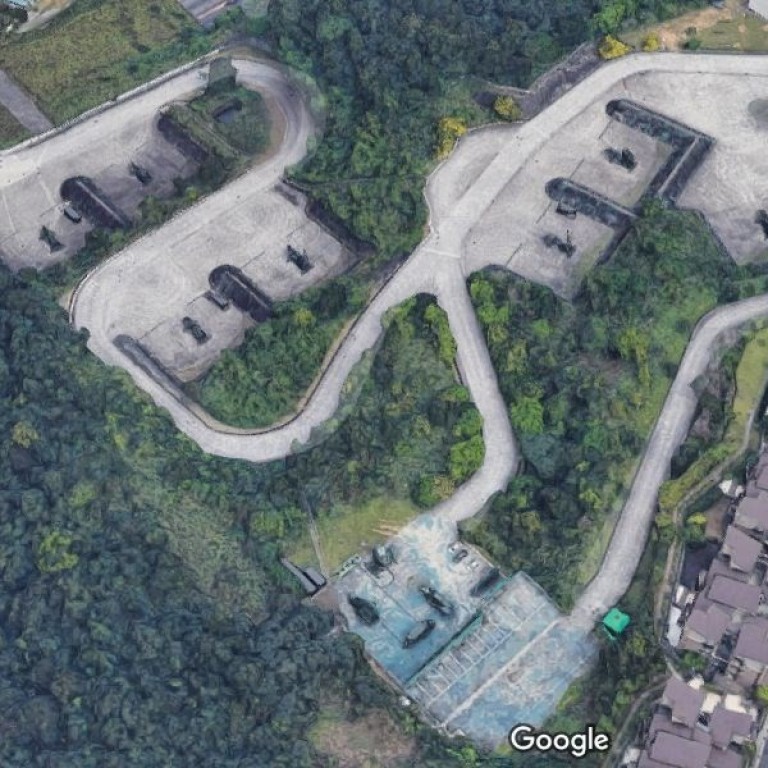
Taiwan’s darkest military secrets revealed by Google Maps
- Enhanced 3-D maps leave nothing to the imagination including Patriot missile base
- Defence minister appeals for calm
Some of Taiwan’s most sensitive military sites – including its facilities for the US-made Patriot missiles – have been accidentally revealed to the public through Google’s latest 3D-rendered maps.
Lawmakers have demanded contingency plans to prevent the secret locations being targeted by Beijing in the event of a cross-strait conflict, while the self-ruled island’s defence minister has appealed for calm.
Google’s new 3-D maps – an extension of its original satellite mapping of the world’s major cities – feature better imagery and three-dimensional terrain for four major cities in Taiwan: Taipei, New Taipei, Taoyuan, and Taichung, according to Google Earth.
But all structures – down to the types of launchers and models of the missiles – are clearly visible on the new maps, including the previously secret Patriot missile base in Ankeng, Taipei, as well as defence infrastructure at the National Security Bureau and the Military Intelligence Bureau.
Chinese military flies Su-30 fighter jet, Y-8 surveillance plane close to Taiwan in latest show of strength
The breach follows a period of intense pressure from Beijing, which considers Taiwan to be a wayward province that must be reunited by force if necessary.
In January Chinese President Xi Jinping urged Taiwan not to stall unification, suggesting it could be achieved through the same “one country, two systems” model applied in Hong Kong and Macau under the one-China principle.
Taiwan’s Defence Minister Yen Te-fa said a task force had been formed to work with Google to seek appropriate adjustments to ensure national security was safeguarded.
“Actually, the site of defence infrastructure at times of peace will not be the same as those at times of war,” he noted.
Yen said Taiwan was not alone in facing the problem, given the advancement of commercial telemetric satellite technology. We will undertake some examinations to deal with the issue, he said, adding it would not affect regular military operations.
Taiwan’s Fort Act, which makes it an offence to reveal certain military structures, does not extend to all sites, with barracks currently excluded from the law.
“There is a need to further review the law,” Yen said.
Republican US senators want to invite Taiwan President Tsai Ing-wen to address Congress
A defence official told the South China Morning Post that, in addition to asking Google to blur the locations, the military would be working to strengthen the camouflaging of structures and facilities.
“Actually, the confidential parts are all inside the structures which would be highly difficult to expose through the 3D maps,” he said.
This is not the first time Taiwan has asked for details of its military facilities to be obscured by Google. In 2016, it asked the tech giant to blur out part of Taiping Island, or Itu Aba, in the South China Sea, where it was building a military fortification.
In 2012, Taiwan asked Apple Maps to blur out a base in the northern city of Hsinchu, home to a cutting-edge US-made radar, capable of detecting missiles launched as far away as Xinjiang in China’s northwest.

